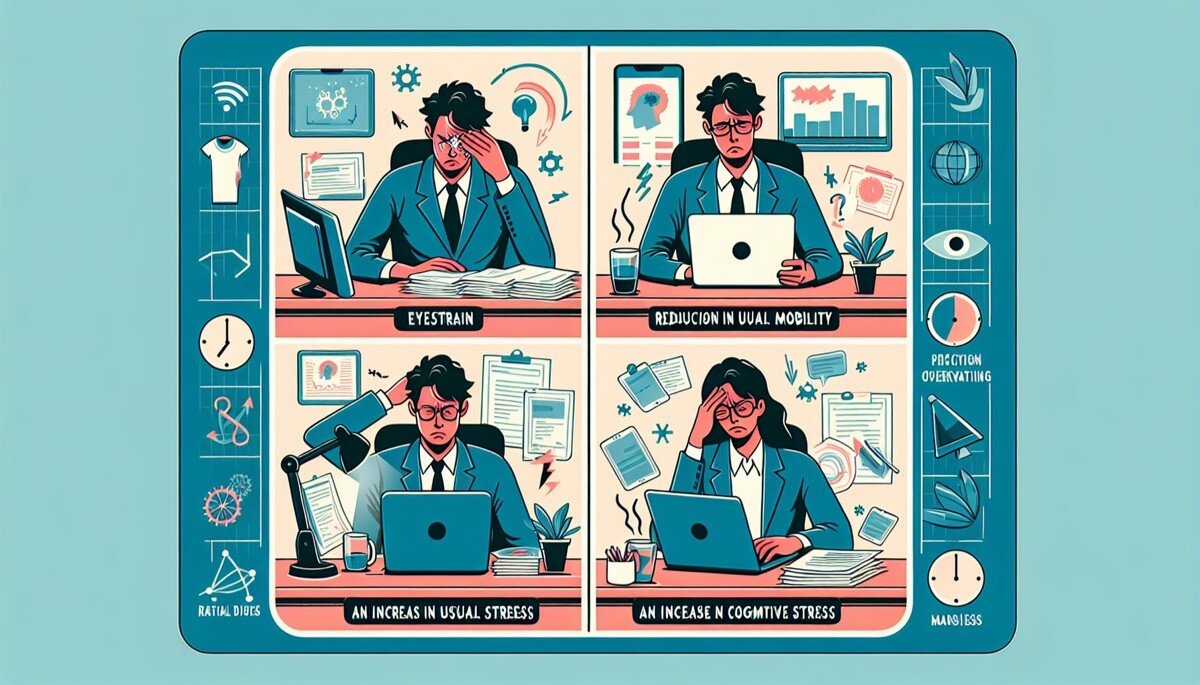
The most common 4 causes of Zoom fatigue
Do you often feel worn out after your Zoom calls? If so, there are high chances that you may be experiencing Zoom fatigue. Unfortunately, zoom fatigue is fast becoming a popular thing in recent times, thanks to the increased use of video conferencing platforms like Zoom in remote working.
Zoom fatigue is a real thing that people suffer from when doing remote work, but sometimes it might be hard to recognize the signs. One of the most prominent signs of Zoom fatigue is feeling exhausted and drained after your Zoom calls. Sometimes, team members may reschedule Zoom meetings or prefer emails instead. In addition, some workers often like to switch off their cameras during Zoom meetings. These and more are some of the common signs of Zoom fatigue.
There are several established causes of Zoom fatigue. In this post, we will be looking at some of the top causes.
1. Eyestrain
During physical meetings, your eyes are rarely fixed on one point; they are either glancing at the speakers and team members or spanning the entire width of the meeting room. However, during Zoom meetings, we tend to fix our eyes directly on the screens, which is often hazardous to our eyes. In addition, this intense close-up eye contact strains our eyes, leading to high fatigue after the Zoom meetings.
2. Reduction in usual mobility
Mobility enhances better cognitive ability. But, during the Zoom meetings, workers are confined to a spot under the camera’s view for a prolonged period. Members, for example, cannot pace the room or talk with their hands in Zoom meetings. This is uncomfortable and draining as most people are forced to sit still for the entire length of the Zoom meeting.
3. An increase in cognitive stress
Zoom meetings come with higher cognitive stress. For example, workers in physical meetings can nod their heads or make certain gestures to confirm that they are paying attention to the speaker. But in Zoom meetings, workers have to work harder to send and receive signals, which leads to an increase in their cognitive load.
4. Mental stress
Several things can cause mental stress in Zoom meetings. For example, during the meetings, the video chat cameras are set on your face, requiring you to make conscious efforts to adjust your face and ensure you are looking your best throughout the meeting. Also, people with high anxiety levels would feel uncomfortable seeing the faces of multiple participants in the meeting. Others find it stressful to keep seeing themselves while talking to their coworkers. All these lead to “Zoom fatigue” among remote workers.
Another source of stress is that, depending on your monitor size and whether you’re using an external monitor, faces on video conferencing calls can appear too large for comfort. Having these large faces on your screen sends intense signals to your brain, making you hyperalert during the meeting.
Final thoughts
The remote working environment can become challenging. Many workers in remote work have reported severe cases of Zoom fatigue. Unfortunately, not many people are aware of the signs and causes of zoom fatigue, hence this post.

